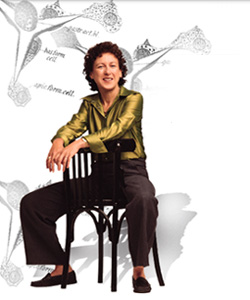Are you a journalist? Please sign up here for our press releases
Subscribe to our monthly newsletter:
"Here we are, working at the frontier of science and technology, and the mollusks are teaching us about the nature of things and solving mysteries that have puzzled us for decades. It keeps us humble."
Prof. Lia Addadi
Head of the Structural Biology Department
Prof. Addadi holds the Dorothy and Patrick Gorman Chair

Prof. Lia Addadi, head of the Weizmann Institute's Structural Biology Department, suggests an original approach to these questions. Addadi has proved that proteins and cells can "recognize" crystals of other substances and can also differentiate between crystals that are mirror images of each other. Sometimes a protein or a cell will prefer one mirror image to another. When a protein binds to a crystal that it recognizes, it actually serves as a "blueprint" which shapes the crystal as it forms.
In conjunction with Prof. Steve Weiner of the Structural Biology
Department, Addadi discovered that this is how certain mollusks fashion their shells. By secreting different proteins, they form a frame that shapes the development of mineral crystals comprising the shell. This research may lead to the discovery of new ways to produce advanced composite materials that are essential for industry in general and the aerospace industry in particular.
While following another line of research, Addadi discovered that certain antibodies can accelerate the formation and dissolution of specific crystals in the joints, possibly causing diseases of the joints, such as gout. Further understanding of antibody recognition of the surface structure of crystals may lead to the development of biosensors as useful tools in modern medicine.